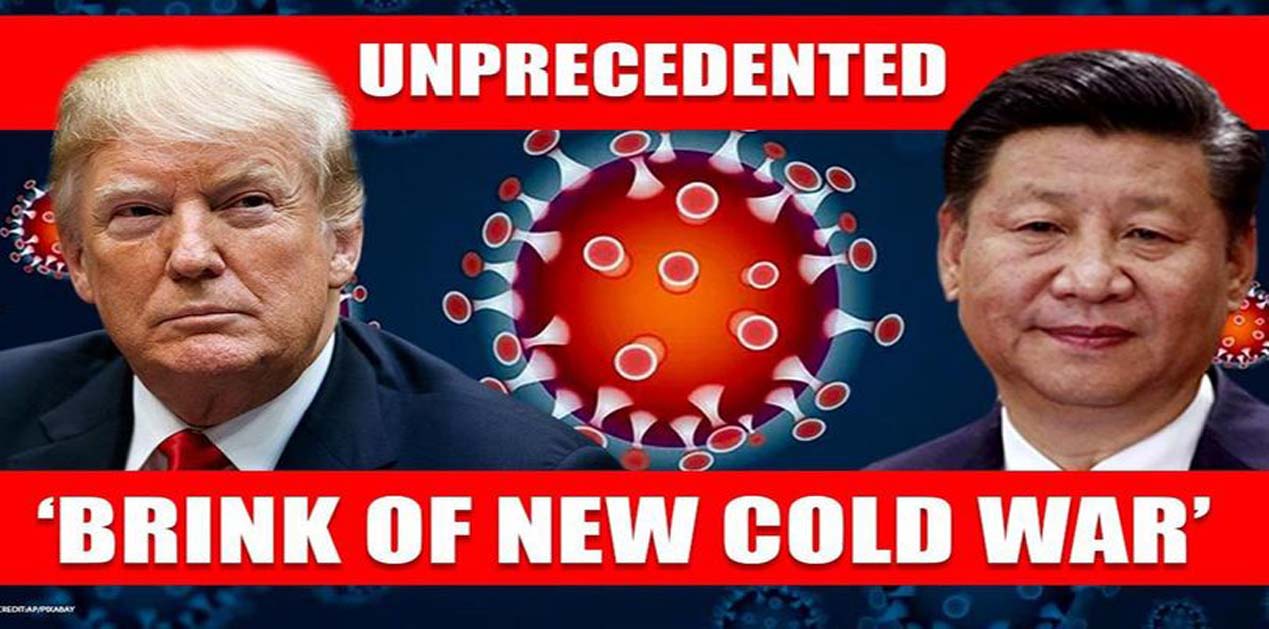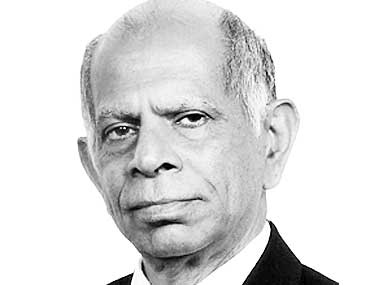China-U.S. relations are deteriorating at a rapid pace and some scholars have wondered whether we are witnessing the beginnings of Cold War 2 between the two biggest economies?
On 21st July 2020, the U.S. State Department ordered that Chinese Consulate in Houston “to cease all operations and events” within 72 hours. The State claimed that it had taken the action to protect “American intellectual property and Americans’ private information”. China has retaliated by asking U.S. to close down its consulate in Chengdu from where it kept an eye on Tibet and Xinjiang.
What was the signal that China wanted to send out by choosing Chengdu? Obviously by closing down the U.S. consulate in Shanghai or Hong Kong, China could have hit harder. It also had the option to close down the one in Wuhan which is inactive because the Americans had left after the contagion broke out. In short, China wanted to hit back, but not too hard, nor too mildly.
In 1949 when Mao Zedong declared the establishment of the People’s Republic of China (PRC) and announced that China ‘stood up’, President Truman refused to recognize the PRC and enabled the self-exiled Chiang Kei-shek in Formosa ( Taiwan) to take China’s place in the U.N., including at the Security Council as one of the Permanent Five.Jawaharlal Nehru’s advice to Truman to deal with China fell on deaf ears. Twenty-two years later, President Nixon wanted to build up China as a counterweight to U.S.S.R and sent Henry Kissinger in July 1971 to open up contacts. However, full diplomatic relations were established only n 1979.
It was Nixon’s act that paved the way for China to enter the United Nations and the international community, and benefit from ‘market globalization’ by resorting to export-led growth. It was admitted to the World Trade Organization in 2001, twenty-three years after opening up its economy in 1978.
That Nixonian policy has been continued more or less by his successors till Trump under whom, initially the bilateral relations appeared to be improving. Trump admires ‘strong men’ and in his eyes President Xi Jinping is the ‘tallest’among them. At the same time, Trump is convinced that China had indulged in industrial and technologicalespionage in U.S. and the soaring imbalance in bilateral trade had to be corrected. He wanted to project himself as the President who is courageous enough to correct past mistakes. He started with trade.
Let us look at an abridged timeline of relations between these two powers1:
2018
- Jan. 22: U.S. President Donald Trump imposes tariffs on all imported washing machines and solar panels, including from China.
- March 8: Trump orders 25% tariffs on steel imports and 10% on aluminum from all suppliers including from China.
- April 2: China imposes tariffs of up to 25% on 128 U.S. products including airplanes and soybeans.
- April 3: Trump unveils plans for 25% tariffs on about $50 billion of Chinese imports.
- Aug. 22: A New York court issues an arrest warrant for Meng Wanzhou, chief executive of telecoms equipment company Huawei Technologies, to stand trial in the United States.
- Sept. 24: 10% tariffs on $200 billion of Chinese imports kick in. The administration says the rate will increase to 25% on Jan. 1, 2019. China taxes $60 billion of U.S. goods.
- Dec. 7: Court proceedings show the United States has issued an arrest warrant for as it believes Meng covered up attempts by Huawei-linked companies to sell equipment to Iran, breaking U.S. sanctions against the country.
2019
- Aug. 1: Trump announces 10% tariffs on $300 billion in Chinese imports, after two days of talks with no progress.
- Aug. 5: China halts purchases of U.S. agricultural products, and the Chinese yuan weakens past the key seven per dollar level. The U.S. Treasury says China is manipulating its currency.
- Aug. 13: Trump postpones some of the 10% tariffs on the $300 billion goods list until Dec. 15.
- Aug. 23: China announces additional retaliatory tariffs on about $75 billion worth of U.S. goods.
- Sept. 20: U.S. Trade Representative issues tariff exclusions on about 400 Chinese products.
- Oct. 7: The U.S. Commerce Department puts 28 Chinese companies on its “entity list,” restricting the sale of U.S. goods and technology to them over their alleged involvement in human rights abuses against Uighur Muslims in Xinjiang. China says the United States should stop interfering in its affairs
- Oct. 11: After two days of high-level talks, Trump announces a Phase 1 deal that includes suspension of planned tariffs and a Chinese pledge to buy more farm goods.
2020
- Jan. 11: A 61-year-old Chinese man is reported to have died in Wuhan from what preliminary lab tests cited by Chinese state media suggest is a new type of coronavirus.
- Jan. 27: The United States warns against travel to China, a day after five people who had been in Wuhan become the first confirmed cases in America.
- Feb. 1: The United States, Singapore, Russia and Australia ban foreign travelers who were recently in China.
- March 17: China withdraws the press credentials of American journalists at three U.S. newspapers.
- May 28: China’s parliament overwhelmingly approves imposing national security legislation on Hong Kong to tackle secession, subversion, terrorism and foreign interference. Trump orders his administration to begin the process of eliminating special U.S. treatment for Hong Kong, but stops short of calling an immediate end to privileges that have helped the territory remain a global financial center.
- June 22: The United States says it will start treating four major Chinese media outlets as foreign embassies, alleging they are mouthpieces for Beijing. The designation requires the outlets to inform the U.S. State Department of their personnel rosters and real-estate holdings.
- July 1: U.S. Secretary of State Mike Pompeo calls Hong Kong law an affront to all nations and says Washington will pursue Trump’s directive to end the territory’s special status.
- July 1: China asks four U.S. media organizations to submit details about their operations in the country in what it describes as retaliation for U.S. measures against Chinese media outlets.
- July 13: The United States rejects China’s claims to offshore resources in most of the South China Sea, drawing criticism from China which says the U.S. position raises tension in the region. Brunei, Malaysia, the Philippines, Taiwan and Vietnam challenge China’s claim to about 90% of the sea.
- July 22: The United States tells China to close its consulate in Houston, and a source says Beijing is considering shutting the U.S. consulate in Wuhan in retaliation.2
- July 24: China closes down the U.S. consulate in Chengdu.
The public exchange between the two powers has become more and more harsh. Standing in front of the Nixon Library, Yorba Linda, California, Secretary of State Mike Pompeio said, “If we bend the knee now, our children’s children may be at the mercy of the Chinese Communist Party, whose actions are the primary challenge today in the free world,” and his reference to the closing of the consulate in Houston was met with applause.3
Chinese officials have reacted angrily to the administration, accusing Mr. Pompeo and others of embracing a Cold War mentality. In a tweet Hua Chunying, a foreign ministry spokeswoman, criticized Mr. Pompeo for “launching a new crusade against China in a globalized world…What he is doing is as futile as an ant trying to shake a tree.”4
United States has been exerting its diplomatic clout to build up an international coalition against China. We do not know which countries will join in. We note that a few weeks ago Japan cancelled an official visit to Tokyo by President Xi Jinping, an unusual act on the part of Japan which has treated China with much deference. China has hit Australia by banning Australian beef after Australia took the lead in the World Health Assembly to blame China for its irresponsible behavior in the context of Covid-19. Australia has supported the U.S. stand that China’s claims and actions in the South China Sea are ‘unlawful’. Relations between London and Beijing have become discordant after China violated the terms of the 1997 agreement between them when Hong Kong was handed back to China. European Union has made it clear that it would prevent China’s inroads into the continent by buying up financially distressed companies.
Will Trump’s successor in the White House pursue his rather strident policy toward China? We do not know. But we do know that a consensus has emerged in U.S. that China’s rise has to be stopped.
On July 1, 2020 China abolished Hong Kong’s autonomy that China had pledged to uphold till 2047 when the United Kingdom left Hong Kong in 1997. The next day the U.S.Congress unanimously passed legislation to punish banks doing business with those responsible for that decision.
In any case, by now it is abundantly clear that China’s ‘peaceful’ rise is over. By its violation on international law in the South China Sea and its ongoing belligerence toward India at the border, China has made it clear that it no longer wants to pretend that it is seeking any ‘peaceful rise’.
Some scholars speak of Thucydides’ trap between U.S. and China. Thucydides, the great Greek historian, wrote in his History of the Peloponnesian War that “it was the rise of Athens and the fear that this instilled in Sparta that made war inevitable". It might not be historically sound to extrapolate from antiquity to our times. There was no war between U.K. and U.S. when the former was replaced as the strongest power post-1945, or even earlier.
However, a Cold War cannot be ruled out. While China’s economy has already recovered from the adverse impact of Covid-19 or might do so ahead of other major economies, its exports or the rate of growth thereof, might decline for rather obvious reasons.
Whatever was the set of motives that impelled Xi Jinping to abolish the special status of Hong Kong or to violate the LAC at the border with India, it is abundantly clear that he will be compelled to learn about the law of unintended consequences, the most important lesson that history teaches those who care to figure it out.
China’s rise, no longer peaceful, is almost over. Geopolitical equations are being re-written. The best recipe for a peaceful and stable world is a China that stops rising and starts falling, a U.S. that continues to fall, but taking leadership as needed to support a law-based world order, with other major powers like India, Japan, Germany, and France, to name only a few, to assert themselves more and more for a better world order that includes an appropriate restructuring of the U.N. Security Council.
Endnotes
- Timeline: U.S.-China relations under Trump - Reuters. https://www.reuters.com/article/usa-china-consulate-timeline-idUSL2N2EU2KP
- Bernadette Baum, https://in.reuters.com/article/usa-china-consulate-timeline/timeline-us-china-relations-under-trump-idINL2N2ET10B
- https://www.state.gov/communist-china-and-the-free-worlds-future/
- https://www.nytimes.com/2020/07/24/world/asia/china-us-consulate-chengdu.html
(The paper is the author’s individual scholastic articulation. The author certifies that the article/paper is original in content, unpublished and it has not been submitted for publication/web upload elsewhere, and that the facts and figures quoted are duly referenced, as needed, and are believed to be correct). (The paper does not necessarily represent the organisational stance... More >>
Image Source: https://img.republicworld.com/republic-prod/stories/promolarge/xxhdpi/g1ea9jnohdadxgt3_1590307802.jpeg?tr=w-812,h-464











Post new comment